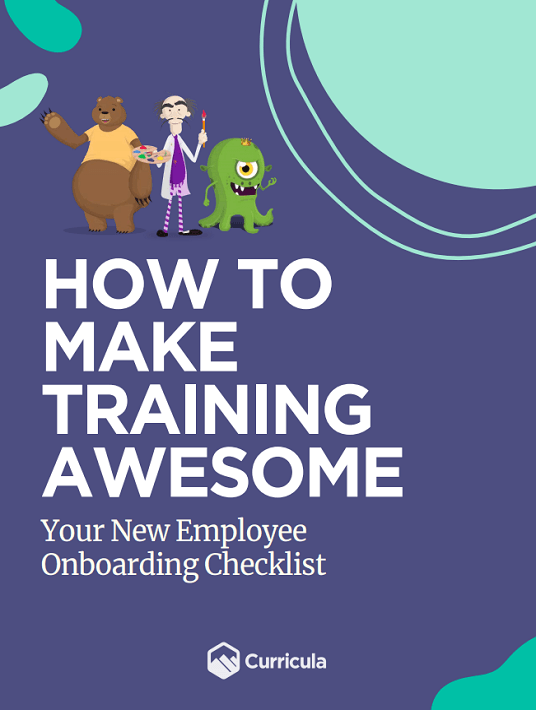Weaving Tales For New Recruits: Tips To Use Storytelling In Online Training
Hearing “Once upon a time...”, and you immediately become involved in the story. That’s how leveraging storytelling in your new hire training can really make a difference with employee engagement. When someone listens or watches a story that’s related to their training, it immerses them in the learner experience and they become part of the narrative.

Why Storytelling Is A Powerful Onboarding Tool
The first day of a new job makes for a great story, and it’s a day new employees will never forget. You’re the author of that story with experiential learning; if someone asks your new hire, “How was Day 1?” you want them to share about their great onboarding experience. How do you make onboarding so great that your employees want to retell the story of joining your company?
This part of storytelling is so important because it sticks with people throughout their tenure. There's always a beginning, middle, and end to every employee’s story, and most people remember the beginning and end far more vividly than the middle—that's why it's so important to nail new hire training.
Learning cannot happen without both memory and attention, and your new employees will be inundated with new information during their onboarding. We all have the ability to memorize certain facts, but the amount we can memorize differs. Furthermore, new employees certainly won’t be able to remember everything, and that’s where storytelling and the use of narrative can play a big role to help them internalize the information that they need the most.
In this article, we’ll discuss why using a story-based approach works for experiential learning. We’ll dive into how to create content for corporate learning that’s actually fun and challenges the status quo of ‘Death by Powerpoint’.
These factors all play a part when creating great learning experiences. Powerful storytelling puts your employees in the driver’s seat of their new hire training to make online learning more engaging. Now let’s start at the beginning.
“Once upon a time…”
Every story has a beginning, middle, and end. If you look at some of the most famous Disney stories (especially from Pixar) they all follow the same story arc:
- Once upon a time
- Every day
- Until one day something happens
- Because of that something changed
- Something else changed
- Then finally, the adventure comes to a close
- The end
This formula has been used countless times because it’s proven to be so successful. Thinking through how this looks in your corporate learning is a fun exercise to do with your team.
Consider how this story arc template can also be leveraged for your new hire training. At the beginning of our new hire checklist, there’s the story of why the company exists, how it got started, who they help, and why they were hired to be part of this mission.
What story would your company’s C-levels want to tell your new hires? Should they be present (online or record a video) to share their story during training? It all started somewhere, and this story will help to inspire and motivate your new employees.
One story telling example is to have your CEO or founder share the ‘origin story’ of your organization. Why did they decide to start the business, how has it grown, and what the future holds are all important for your new hire to know. While this information may have been provided during the interview, this part of storytelling is so important because it sticks with people throughout their tenure at your company.
Experiential Learning Benefits
Now what does the ‘Everyday’ part look like? With our new hire onboarding checklist, we listed out considerations for job specific training. Here is where you can bring in other team members to share their employee engagement stories.
This is one way to create content for corporate learning that’s actually fun. People love hearing firsthand from their peers about their experiences, and this dialogue is another form of interactive storytelling. Your employees are your best recruiters, brand ambassadors, and advocates - their exposure to your new hires will only help motivate them more, and will inspire new hires to ‘pay it forward’ to the next round of new hires.
When they put on that new company t-shirt, you want them to feel a sense of pride—proud of the company they’ve joined and the work they’ll be doing— and you want them to be ready to brag about where they work and why. This enables them to feel like they’re joining your organization on a mission, and a fun one at that, because that feeling is what will provide continuous motivation throughout their career working for your company.
No More ‘Death by PowerPoint’
Instead of telling a new employee the things they need to know in a giant PowerPoint presentation, how can you package the same information using a story to create a learning path they follow throughout their onboarding? How can you help to keep their attention?
At Curricula, in our training content, we leverage quiz questions along the way as we’re teaching a certain concept. We provide short, digestible content delivered through animated video or presentations. Then, we ask a question following the content to see if the employee was listening. If they were actually paying attention to the story, then it’s easy to answer. And by making our content fun using animated characters and graphics, employees are happy to watch a cartoon instead of daydreaming as a moderator clicks through a long deck.
People don’t remember a bunch of slides, they are not computers. Avoid talking to your employees as if they’re supposed to remember every word on a slide.
There are so many ways to make a story interactive. You should use slides to support visual storytelling, but please don’t subject yourself and your new hires to hours of deck content. Think about it with this context: your deck content should be used to set the direction, not give every possible detail of what could happen.
Everything needs to be referenced. It’s a challenge for new employees to retain 100% of the information they receive. You can train someone perfectly but they’ll still forget some things, so it’s important to have a list of resources stored online in a folder, Drive, Dropbox, or Wiki for your new hires to reference.
While your new hires won’t remember everything in training, they will remember how it made them feel.
Conclusion
The power of storytelling makes people feel more connected, like they’re part of something bigger than themselves, whether directly or indirectly involved. Remember: don’t get too granular in your training because it’s not the way people learn about new things.
Using stories should become part of your company culture of how to communicate new and old concepts with each other. Start off right with a strong beginning, because everything your employees do plays a role in the success of your organization.
Every employee will have their own “Once upon a time...” and it starts with their onboarding. They’ll write their own story about the time they worked for your company, a story that has a beginning, middle, and end.
We wrote the eBook How To Make Training Awesome: Your New Employee Onboarding Checklist, so you can jump around to the parts of this book to find the information you need to be successful with your new employee training. Each chapter ends with key takeaways, and you can also replay our webinar where we discuss how to incorporate storytelling into your employee training.








